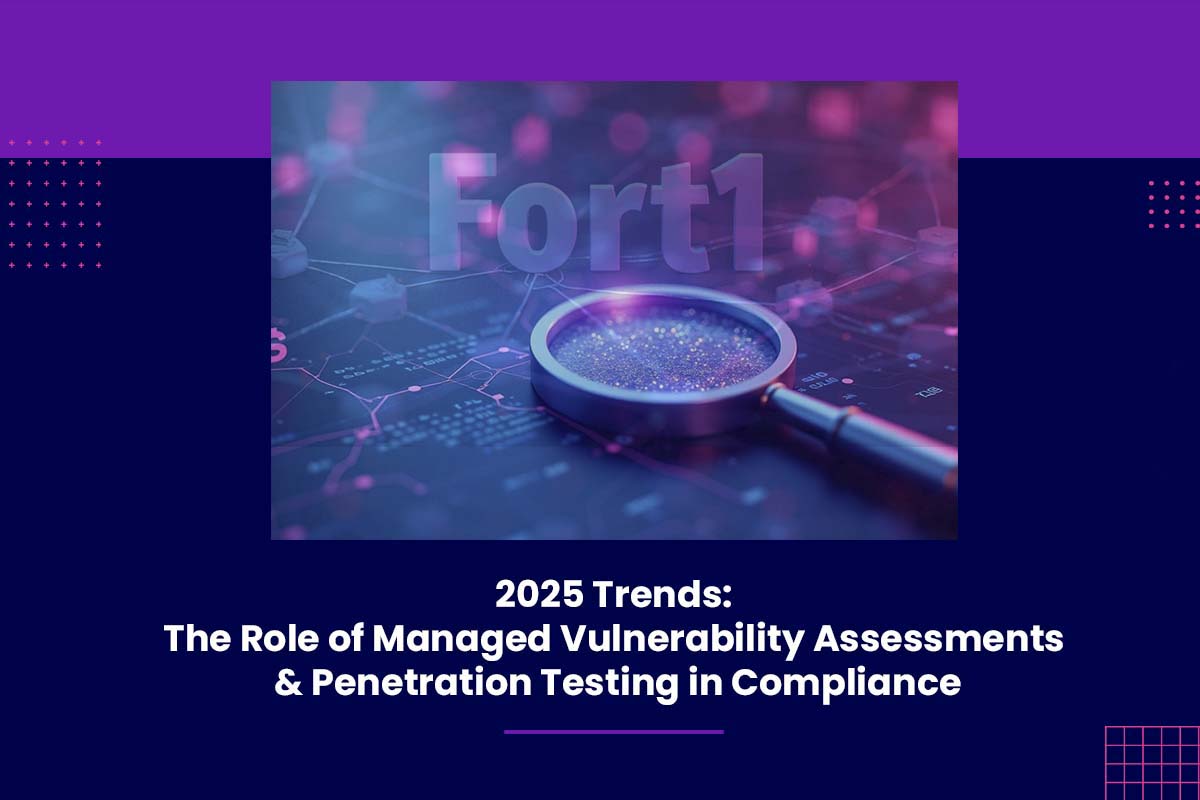




In 2025, vulnerability assessments and penetration testing have become indispensable tools for organisations striving to maintain compliance and ensure cyber resilience. As regulatory frameworks evolve to address increasingly sophisticated threats, businesses must adopt proactive security measures to demonstrate their commitment to protecting sensitive data and digital infrastructure.
This article explores the growing significance of vulnerability assessments and penetration testing within modern compliance strategies. From understanding their distinct yet complementary roles to examining how they help meet the requirements of standards like ISO 27001, the Privacy Act 1988, and APRA CPS 234, this guide provides actionable insights for business and IT leaders alike.
We will also examine the emerging trends shaping vulnerability management and ethical hacking in 2025, including automation, AI integration, and continuous security validation. By the end, you will have a clear understanding of how these practices contribute to compliance and long-term cyber maturity—particularly for Australian enterprises navigating complex regulatory landscapes.
As the cyber threat landscape continues to expand, regulatory bodies are intensifying expectations around information security and data governance. In 2025, compliance is no longer just a legal necessity—it has become a vital component of business reputation and operational resilience.
Australian organisations now face stricter enforcement of established frameworks. The APRA CPS 234 requires regular testing and assurance of information security controls, especially within the financial sector. Similarly, the Privacy Act 1988 mandates the responsible collection, storage, and use of personal data. These obligations are being more rigorously audited and penalised than ever before.
International benchmarks like ISO/IEC 27001:2022 are increasingly influencing security practices in Australia. These standards require evidence-based risk assessments, which include regular vulnerability evaluations and attack simulations.
Within this context, vulnerability assessments and penetration testing play a critical role. They provide measurable proof of a business’s efforts to identify and mitigate security risks. These actions are often required during external audits or incident reviews and support a cycle of continuous improvement by exposing systemic weaknesses before they lead to breaches.
| Requirement | 2024 | 2025 |
|---|---|---|
| Vulnerability Testing Frequency | Annually or Bi-annually | Quarterly or Continuous |
| Penetration Testing Scope | External Networks | External + Internal + Cloud |
| Incident Reporting Timeline | Within 30 Days | Within 72 Hours (Regulated) |
| Regulatory Expectations | Best Practice Guidance | Mandatory Compliance Evidence |
| Audit Readiness | Reactive, Periodic | Proactive, Continuous |

In the context of modern cybersecurity, vulnerability assessments and penetration testing are two foundational practices that serve different, yet complementary, purposes. Both are vital components of any organisation’s compliance and risk management strategy, particularly as regulatory standards tighten in 2025.
A vulnerability assessment is a systematic process of identifying known security weaknesses in systems, networks, or applications. It is usually performed on a scheduled, recurring basis using automated tools and provides a broad view of the organisation’s exposure. Its primary goal is to prioritise vulnerabilities based on severity and help IT teams address issues before they are exploited.
Penetration testing, on the other hand, simulates real-world cyberattacks to identify exploitable weaknesses that a vulnerability scan might miss. It involves ethical hackers using manual and automated methods to assess how far an attacker could penetrate systems. Pen tests are typically more focused, carried out periodically or after major changes to infrastructure.
In combination, these methods not only identify and confirm security gaps but also provide documented evidence of an organisation’s due diligence—an essential component of frameworks like APRA CPS 234, which requires regulated Australian entities to test and validate their security controls regularly.
| Feature | Managed Vulnerability Assessment | Penetration Testing |
|---|---|---|
| Frequency | Regular / Automated | Periodic / Manual |
| Objective | Identify known vulnerabilities across systems | Simulate real-world attack scenarios |
| Scope | Broad and automated across infrastructure | Targeted and in-depth analysis |
| Compliance Use | Ongoing monitoring for audit readiness | Formal testing to meet audit requirements |

In an era where cybersecurity regulations are becoming more prescriptive, the role of vulnerability assessments and penetration testing in compliance has gained critical importance. These practices are no longer considered optional or best-practice—they are explicit requirements in several major standards and frameworks.
For example, under APRA CPS 234, Australian financial institutions must regularly assess and test the effectiveness of their security controls. Similarly, ISO/IEC 27001:2022 mandates ongoing risk evaluation and mitigation, which is directly supported by both vulnerability assessments and penetration testing. The Privacy Act 1988 also encourages proactive measures to prevent unauthorised access to personal data.
Vulnerability assessments allow organisations to maintain an up-to-date view of their attack surface and prioritise remediation efforts. Penetration testing goes a step further by validating whether vulnerabilities are truly exploitable—and simulating the potential impact of real-world attacks.
Together, these processes provide a solid foundation for demonstrating due diligence to regulators, auditors, and business partners. They also contribute to a documented audit trail, which can be essential during incident investigations or regulatory reviews.
Organisations that fail to conduct these assessments may be seen as non-compliant or negligent, especially in the aftermath of a security incident. Ultimately, vulnerability assessments and penetration testing are not just technical measures—they are strategic compliance enablers.
As cybersecurity threats evolve, so do the strategies used to detect and defend against them. In 2025, organisations are shifting from periodic security checks to continuous, intelligence-driven assessments. This trend is redefining how businesses use vulnerability assessments and penetration testing as part of their compliance strategy.
One major development is the rise of automated vulnerability scanning integrated with AI. These systems can identify new risks in real time and prioritise them based on threat intelligence. This enables security teams to respond faster and more accurately than ever before.
At the same time, penetration testing is becoming more adaptive. Instead of a once-a-year activity, many companies are moving toward on-demand or ongoing penetration testing—especially in DevSecOps environments. This aligns closely with compliance frameworks that now expect evidence of proactive risk mitigation rather than reactive responses.
Another emerging trend is compliance-as-code. This concept embeds security and compliance controls directly into development pipelines. It ensures that all new systems are automatically tested and compliant from the start—saving time and reducing the risk of regulatory breaches.
For Australian businesses, embracing vulnerability assessments and penetration testing offers tangible benefits that go beyond ticking compliance boxes. These practices enable companies to strengthen their overall security posture, meet regulatory expectations, and build trust with clients and partners.
One of the most immediate advantages is regulatory alignment. In industries regulated by bodies such as APRA, the OAIC, or ASIC, regular assessments and testing demonstrate a clear commitment to protecting information assets. For example, healthcare organisations that handle personal health records must comply with the Privacy Act 1988. Conducting regular assessments helps prove that effective controls are in place to secure patient data.
Second, these practices offer early threat detection and cost reduction. Identifying vulnerabilities before attackers exploit them can save businesses from data breaches, reputational damage, and legal penalties. This is especially relevant for small and medium-sized enterprises (SMEs), which often lack the resources to recover from major cyber incidents.
Third, they improve internal accountability and readiness. By maintaining consistent reports and audit trails, businesses can respond to incidents faster and with documented evidence of due diligence.
Finally, adopting these practices enhances customer confidence. Clients are more likely to trust organisations that can demonstrate proactive security and responsible data management.
In short, vulnerability assessments and penetration testing are not just technical tasks—they are essential business investments in today’s risk-conscious environment.
Implementing vulnerability assessments and penetration testing effectively requires careful planning and ongoing commitment. While the benefits are clear, several challenges may arise during execution.
Organisations must ensure that they engage qualified, experienced professionals or reputable security vendors. Not all testing services offer the same depth or compliance understanding—especially in regulated Australian industries.
Budget constraints may limit the scope or frequency of assessments. It is essential to strike a balance between affordability and risk exposure. Prioritising critical assets and systems for testing can help maintain protection within budget.
Employees may view testing as disruptive or fear the exposure of weaknesses. In addition, smaller organisations may lack the internal expertise to interpret results or act on recommendations. Building awareness and offering basic training can help address these issues.
Testing alone is not enough. It must be integrated into wider governance frameworks, risk assessments, and incident response plans. Without this alignment, efforts remain fragmented and less effective.
Despite these challenges, a strategic approach and leadership support can ensure successful implementation that supports long-term compliance and security objectives.
For many organisations, compliance is often treated as a checkbox exercise. However, in 2025, true cyber resilience demands a cultural shift—one where vulnerability assessments and penetration testing become part of an ongoing security mindset, not just regulatory obligations.
For many organisations, compliance is often treated as a checkbox exercise. However, in 2025, true cyber resilience demands a cultural shift—one where vulnerability assessments and penetration testing become part of an ongoing security mindset, not just regulatory obligations.
Culture-driven security initiatives encourage participation across all departments. Employees are educated on secure behaviours, and IT teams are supported with tools and training. This shared responsibility increases the likelihood of identifying and addressing risks early.
Proactive security postures rely on feedback loops. Each assessment or test is not just a report—it’s an opportunity to strengthen systems, update policies, and refine controls. Over time, this fosters resilience that goes well beyond compliance mandates.
When security becomes cultural, compliance becomes natural.
In 2025, the link between regulatory compliance and effective cybersecurity is stronger than ever. Organisations that implement vulnerability assessments and penetration testing as core practices are not only meeting their compliance obligations—they are actively reducing risk, increasing trust, and enhancing operational resilience.
Rather than viewing compliance as a final goal, businesses should see it as a foundation for continuous improvement. When combined with a culture of security awareness, these practices enable long-term protection in an ever-evolving threat environment.
If your organisation is looking to strengthen its security strategy and align with leading compliance standards, Fort1 can help.
Our team of experts provides managed vulnerability assessments, tailored penetration testing, and strategic guidance designed to protect your systems and satisfy audit requirements.
👉 Visit www.fort1.com.au to learn how we can support your compliance and cybersecurity journey today.

Fort1 provides comprehensive cybersecurity solutions tailored to protect your business from evolving digital threats. With expertise in penetration testing, dark web monitoring, and managed detection services, we empower organisations to stay secure and resilient in the face of modern cyber challenges.
Copyright @2024 Fort1. All Rights Reserved by Fort1.